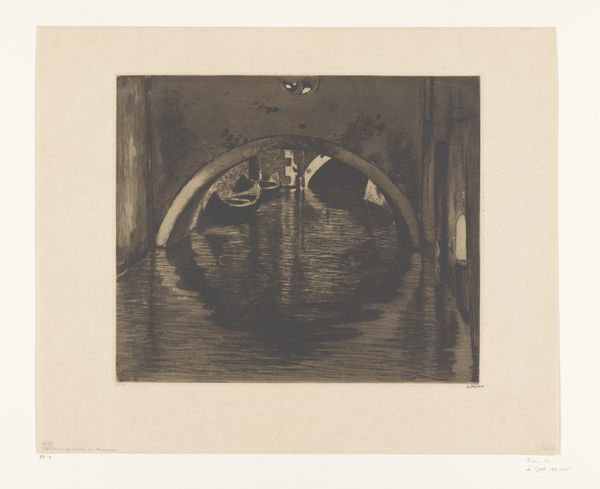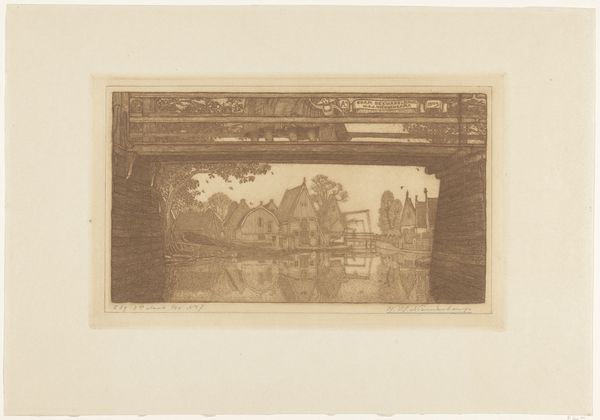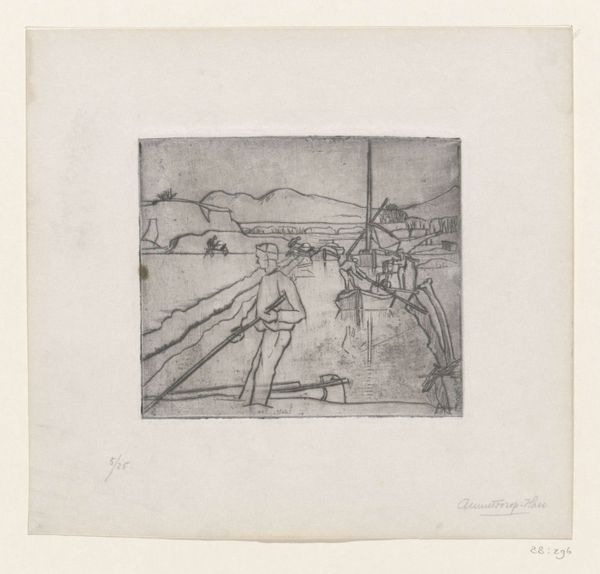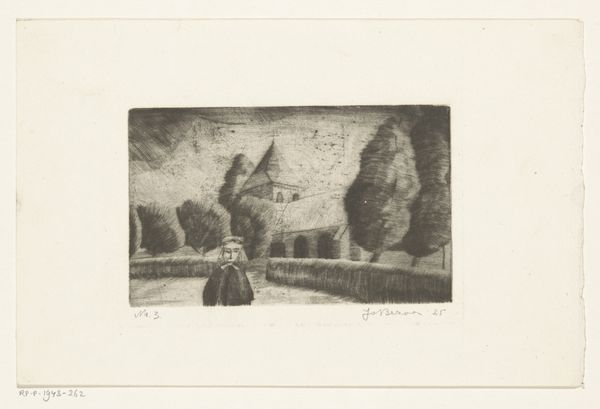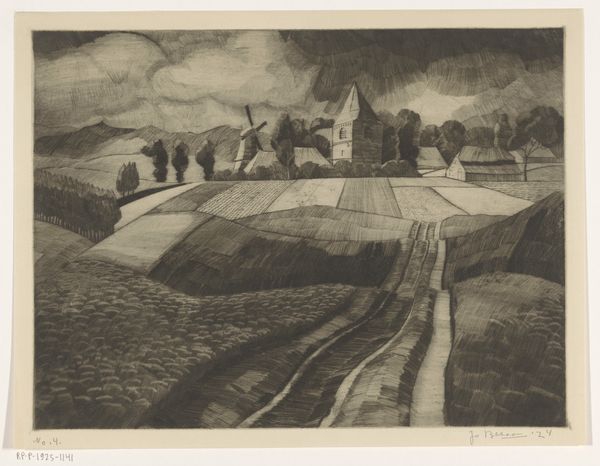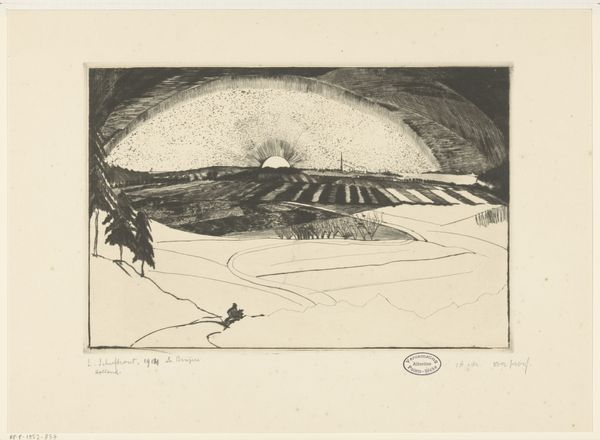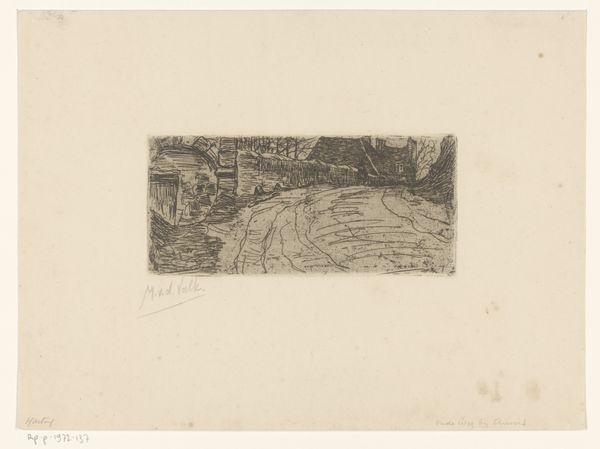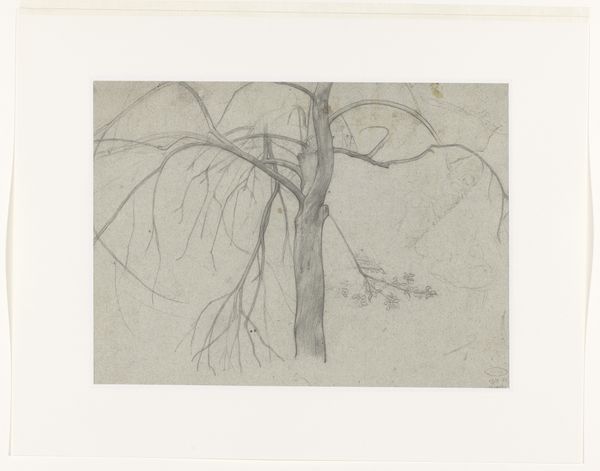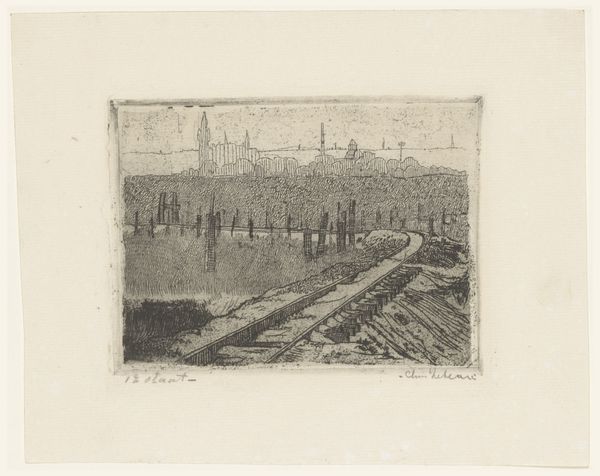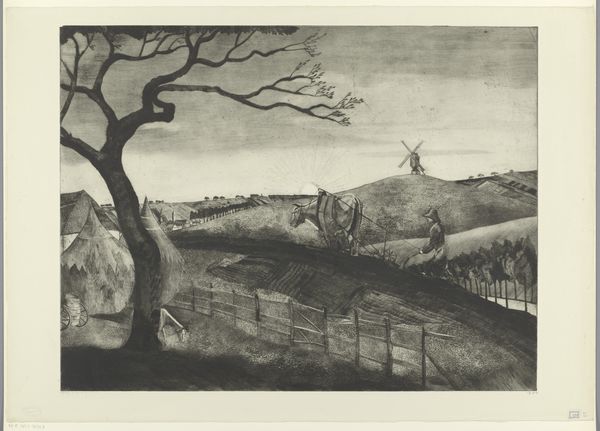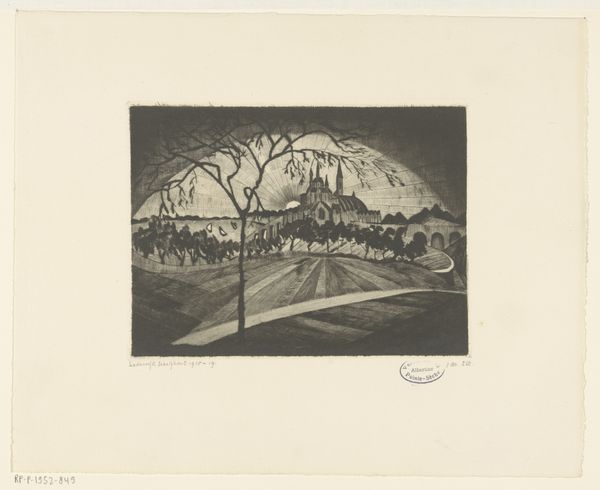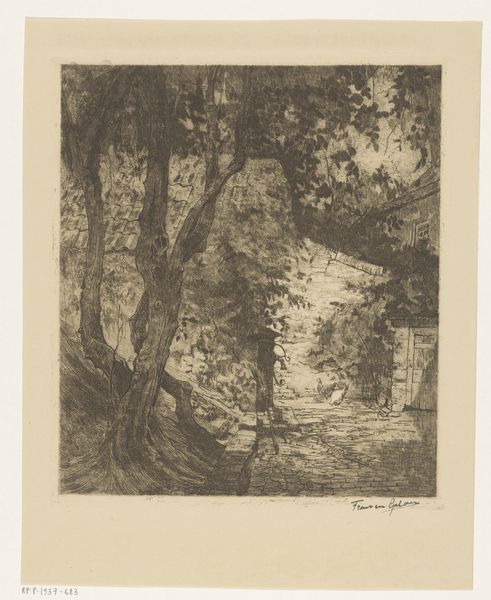
Dimensions: height 280 mm, width 374 mm, height 375 mm, width 540 mm
Copyright: Rijks Museum: Open Domain
Curator: "Landschap met boerderij," or "Landscape with Farmhouse," an etching from 1893 by Simon Moulijn. What are your initial thoughts? Editor: There’s an eerie stillness. The muted palette, the geometric simplifications—it feels like a memory or a dream. What kind of statement was Moulijn trying to make through such stark depiction? Curator: Well, Moulijn was working during a time when artists were increasingly interested in printmaking as a democratic medium, using techniques like etching to create art accessible to a broader public, outside of painting traditions. The etching process itself involves carefully biting into a metal plate with acid, creating these fine lines and textured surfaces. Editor: And that texture certainly adds to the symbolic weight. Those looming structures could almost represent a kind of primordial architecture, and even, the glow emanating from the horizon reads like a symbolic beacon of a new world or the promise of an afterlife. Is he invoking any traditional images? Curator: Perhaps. I'm more interested in his method. This feels deeply informed by Impressionism's interest in capturing fleeting moments of light, despite the graphic medium. Editor: It is so interesting how this links together: Moulijn might very well have been playing with the iconography of "the simple life" while also considering, through the printmaking process, how to bring this idealized life to a wider public—almost like a branding project of agrarianism. Curator: That's fascinating. Thinking about that, it complicates that simplistic reading of rural idylls that he so clearly challenges through its graphic style. The tension is that even in embracing industrial means of production to disseminate, say, the beauty of nature or the simplicity of rurality is, in itself, a type of modernizing or destructive cultural shift, wouldn’t you say? Editor: Absolutely. It pushes me to rethink the familiar, comfortable tropes of rural life as signifiers. A farmhouse is never just a farmhouse. Curator: Exactly, and Moulijn makes you think about that on a formal level, the interplay between art making, industry, and public image, here, is not only evident, but so masterfully performed in an unusual medium like print. Editor: Yes, it is this visual representation and a complex symbolic space the print inhabits that I keep reflecting on.
Comments
No comments
Be the first to comment and join the conversation on the ultimate creative platform.
